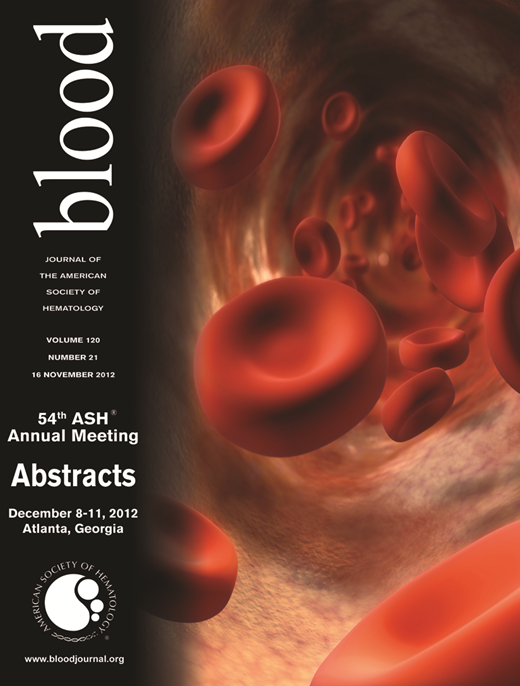Abstract
Abstract  4037
4037
Cardiac and pulmonary events are common comorbidities in patients (pts) with multiple myeloma (MM) that typically affect older adults (Robin J, et al. J Med Case Rep. 2008) and are aggravated by chronic anemia and cardiotoxicity of anti-MM agents such as anthracyclines and hematopoietic stem cell transplantation (Chow AW, et al. Intern Med J. 2012). Pts with MM are also predisposed to pulmonary infections, with pneumonia being one of the most common causes of death (Augustson BM, et al. J Clin Oncol.2005). The following abstract summarizes details of the cardiac and pulmonary safety profile from 4 phase 2 studies of carfilzomib (CFZ), a next generation proteasome inhibitor recently approved for the treatment of relapsed and refractory MM.
Included in this analysis were 526 pts with relapsed and/or refractory MM treated with CFZ in the following trials: 003-A0, 003-A1, 004, and 005. In all studies, CFZ was dosed on Days 1, 2, 8, 9, 15, and 16 of a 28-day cycle (C). Doses could be escalated from 20 mg/m2 in C1 to 27 mg/m2 in C2 for all studies except 005 (15 mg/m2 in C1, 20 mg/m2 in C2, and 27 mg/m2in C3). Pts with NYHA class III-IV heart failure and recent MI/unstable angina were excluded. A comprehensive strategy based on Standardized MedDRA Query preferred terms was used wherein clinically related event terms were grouped to determine the most comprehensive occurrences of adverse events (AEs). The cardiac grouping included cardiac arrhythmias, cardiac failure, cardiomyopathy, and ischemic heart disease (IHD). Medical history was analyzed for relevant comorbid conditions, and baseline cardiac risk factor was defined as pts on ≥1 prior cardiac medication. Multiple dyspnea AE terms were grouped as were pulmonary infections from the Infections and Infestations System Organ Classes. Pulmonary AE analyses included dyspnea time-to-event and duration-of-event analyses.
In all, 73.6% pts had a medical history of a cardiac event and 70.0% demonstrated baseline cardiac risk factors. The most common cardiac AEs were arrhythmias, the majority of which were low-grade, benign, supra-ventricular events such as tachycardia and palpitations. Congestive heart failure (CHF) events were predominantly Grade (G) 3. There were 4 (0.8%) G5 cardiac SAEs, all cardiac arrest. An additional 4 pts had a cardiac component to their death for a total of 8 (1.5%) deaths on study or within 30 days of treatment with a cardiac component. Of note, 7 of the 8 deaths occurred in pts with baseline cardiac risk factors. Overall, 6 pts (1.1%) had a CFZ dose reduction and 23 (4.4%) discontinued treatment due to a cardiac AE. Cardiac events leading to discontinuation included CHF (1.7%), arrhythmia (1.1%), and IHD (1.0%). In general, the rate of cardiac events decreased over time with increased of number of cycles (C1 52/526 pts, 9.9%; C9–11 3/154 pts, 1.9%). The most commonly reported pulmonary AE was dyspnea (42.2%). Of note, the majority of the dyspnea events were G1 or G2 with 1 G5 dyspnea occurring in the clinical setting of CHF. Dyspnea was reported by a higher percentage of pts in earlier cycles vs later cycles (11.8% in C1; 3.2% in C6), suggesting it is likely not associated with cumulative toxicity. The median duration of a dyspnea event was 8 days and the majority of episodes were transient, with 64% lasting <2 weeks. Notably, no interstitial lung disease (ILD) or pulmonary fibrosis AEs were reported. At least 1 pulmonary infection AE was reported for 18.8% of pts; pneumonia was the most common AE (67 pts, 12.7%) as well as the most common SAE (52 pts, 9.9%). Pulmonary infections resulted in the death of 2 pts.
| AE Regardless of Relationship, % . | N=526 . | |||
|---|---|---|---|---|
| . | All Grades . | Grade 3 . | Grade 4 . | Grade 5 . |
| Dyspnea | 42.2 | 4.8 | 0 | 0.2 |
| Any pulmonary infection | 18.8 | 12.4 | 0.6 | 0.4 |
| Cardiac arrhythmia | 13.3 | 1.3 | 0.2 | 0.8 |
| Cardiac failure | 7.2 | 4.9 | 0.8 | 0 |
| IHD | 3.4 | 1.0 | 0.4 | 0 |
| AE Regardless of Relationship, % . | N=526 . | |||
|---|---|---|---|---|
| . | All Grades . | Grade 3 . | Grade 4 . | Grade 5 . |
| Dyspnea | 42.2 | 4.8 | 0 | 0.2 |
| Any pulmonary infection | 18.8 | 12.4 | 0.6 | 0.4 |
| Cardiac arrhythmia | 13.3 | 1.3 | 0.2 | 0.8 |
| Cardiac failure | 7.2 | 4.9 | 0.8 | 0 |
| IHD | 3.4 | 1.0 | 0.4 | 0 |
Cardiac event deaths and deaths with a cardiac etiology are not unexpected in this heavily pretreated, late-stage population. Rates reported here are comparable to those noted in the literature for this population. While dyspnea was frequently observed, events were mainly G1 or G2 and transient, and there were no AEs of ILD or pulmonary fibrosis. Pulmonary infection rates were comparable to those previously reported in the literature. Importantly, CFZ discontinuations and dose reductions due to these AEs were uncommon. Cardiac and pulmonary AEs are being further characterized in ongoing randomized clinical trials.
Lonial:Millennium: Consultancy; Celgene: Consultancy; Novartis: Consultancy; Bristol Myers Squibb: Consultancy; Onyx Pharmaceuticals: Consultancy; Merck: Consultancy. Off Label Use: Carfilzomib for the treatment of Multiple Myeloma. Niesvizky:Celgene: Consultancy, Research Funding, Speakers Bureau; Millennium: Consultancy, Research Funding, Speakers Bureau; Onyx Pharmaceuticals: Consultancy, Research Funding. McCulloch:Onyx Pharmaceuticals: Employment. Rajangam:Onyx Pharmaceuticals: Employment. Vij:Celgene: Consultancy, Research Funding, Speakers Bureau; Millennium: Speakers Bureau; Onyx Pharmaceuticals: Consultancy, Research Funding.
Author notes
Asterisk with author names denotes non-ASH members.

This icon denotes a clinically relevant abstract

